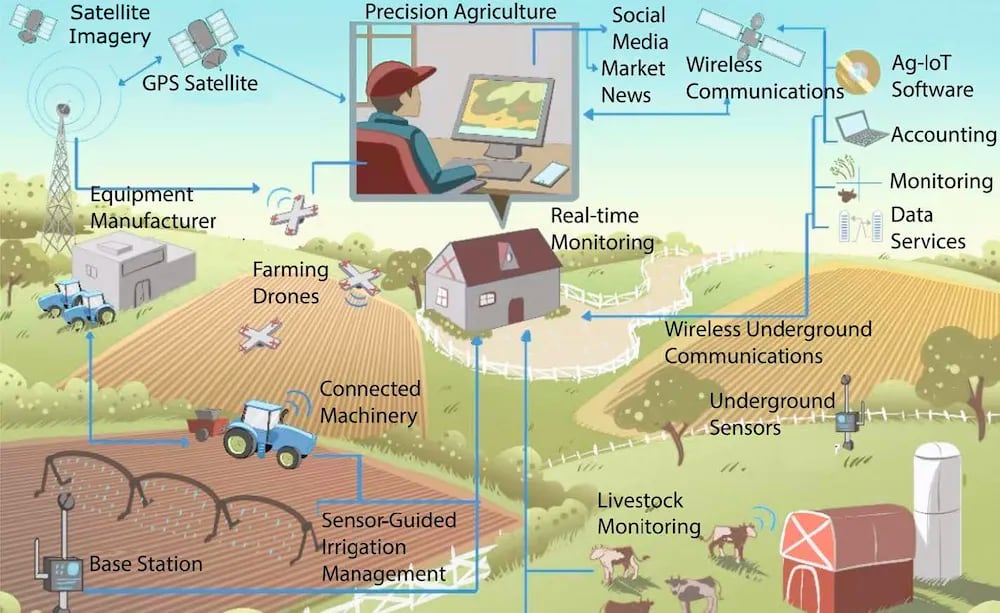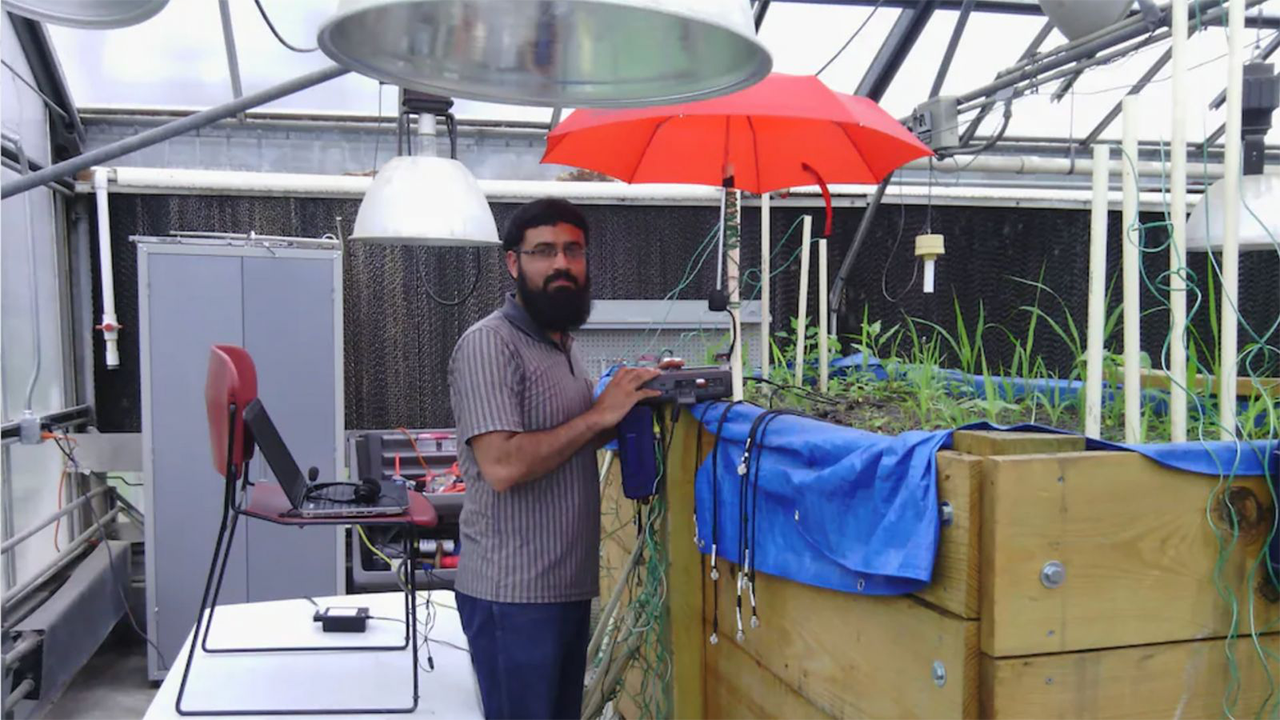Today, the question of how to implement sustainable practices into agriculture has become imperative in response to climate change and environmental concerns. One answer, according to Abdul Salam, may be the development of an underground network of wireless radios, sensors, and antennas.
Salam, assistant professor of computer and information technology and director of Purdue’s Environmental Networking (ENT), is tackling sustainability challenges head on with interdisciplinary research into the Agricultural Internet of Things, or Ag-IoT.
The Ag-IoT is a vast network of wireless objects that can receive and transmit data via the Internet. This technology, such as subsurface sensing or antennas in the soil, allows farmers to track the conditions of their land in real-time. With access to continuously updated information, water and fertilizer can be applied exactly when and where it is needed. In turn, the ability to closely monitor soil suggests major steps forward in agricultural water conservation.
“Putting sensors in the soil has great promise for helping farmers use water more efficiently,” Salam said. “The strategy can reduce water demand for irrigation by anywhere from 20% to 72% without hampering daily operations on crop fields.”
In addition to controlling irrigation systems, this interconnected framework of devices can be used to monitor environmental conditions, control farm machines like seed planters, estimate soil nutrient levels, and even identify pests.

Wireless data collection does have its challenges, however, when it comes to actually installing these devices into the ground. Researchers at Purdue’s ENT lab have found that soil moisture can drastically change the performance and sensor data transmission of underground antennas.
“Farmers use heavy equipment in fields, so antennas must be buried deep enough to avoid damage. Water in the soil absorbs signal energy, which weakens the signals that the system sends,” Salam explained.
In response to this issue, Salam and other ENT researchers have developed a theoretical model and an antenna that reduces the soil’s impact by changing the operation frequency and system bandwidth. This antenna improves communication distances up to five times compared to previous designs, allowing sensors placed in the top layers of soil to report conditions to irrigation systems at distances up to 650 feet (200 meters).
Salam has also developed the use of directional antennas, which can focus signal energy on any direction. Antennas directing energy toward the air can be used for long-range underground communications.
Researchers are continuing to develop other components of the Ag-IoT, like cybersecurity and satellite-based network connectivity.
Additional information
- Farmers can save water with wireless technologies, but there are challenges — like transmitting data through mud (The Conversation)
- CIT researchers publish book about wireless underground communications, soil sensing
- Underground Phased Arrays and Beamforming Applications (Purdue e-Pubs)
- A Theoretical Model of Underground Dipole Antennas for Communications in Internet of Underground Things (Purdue e-Pubs)
